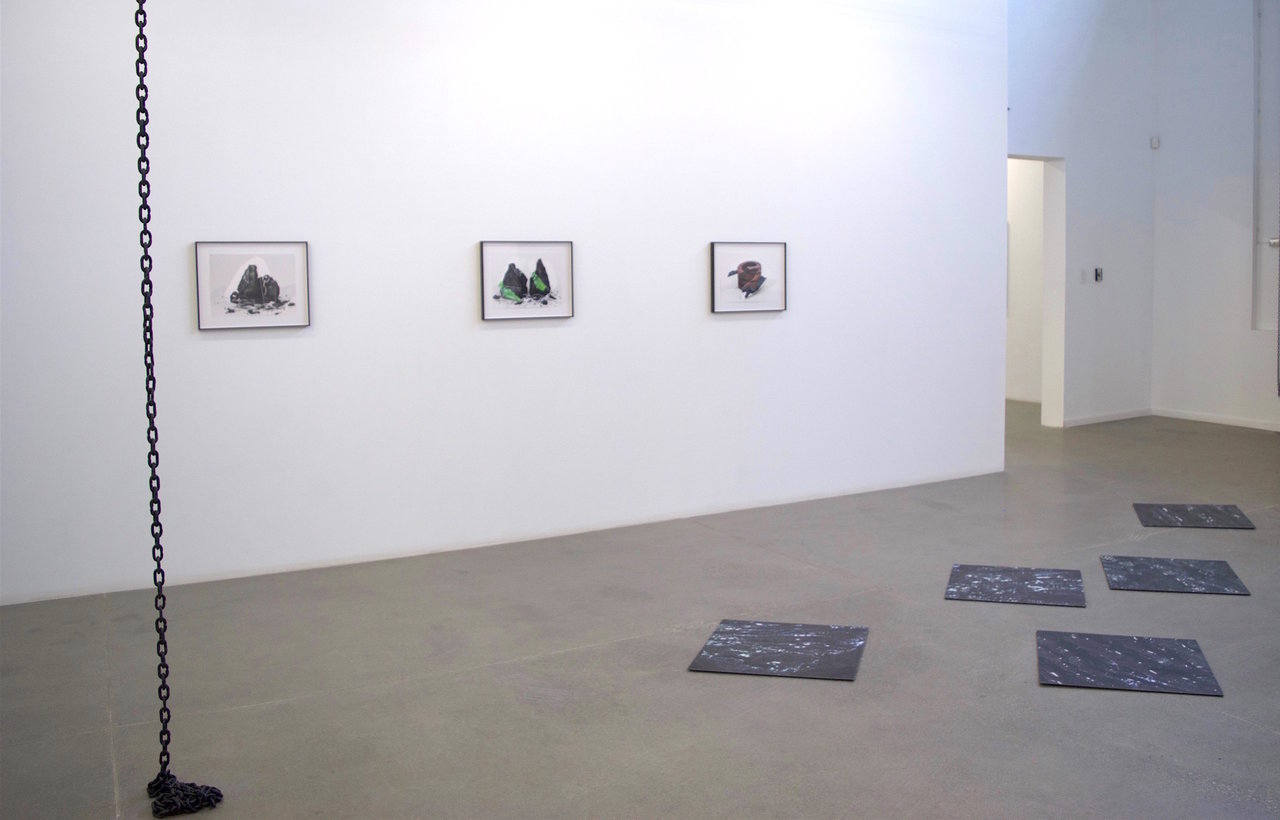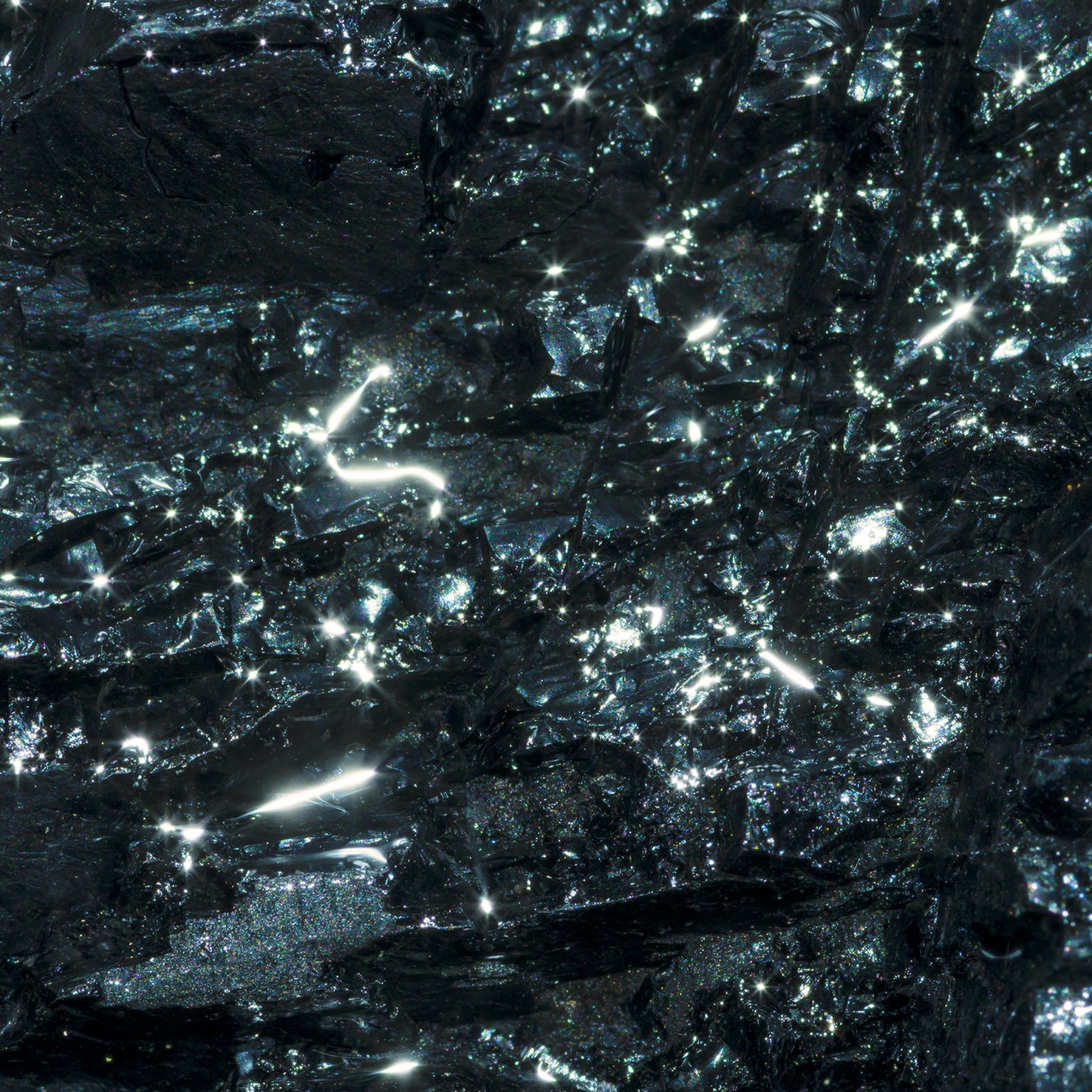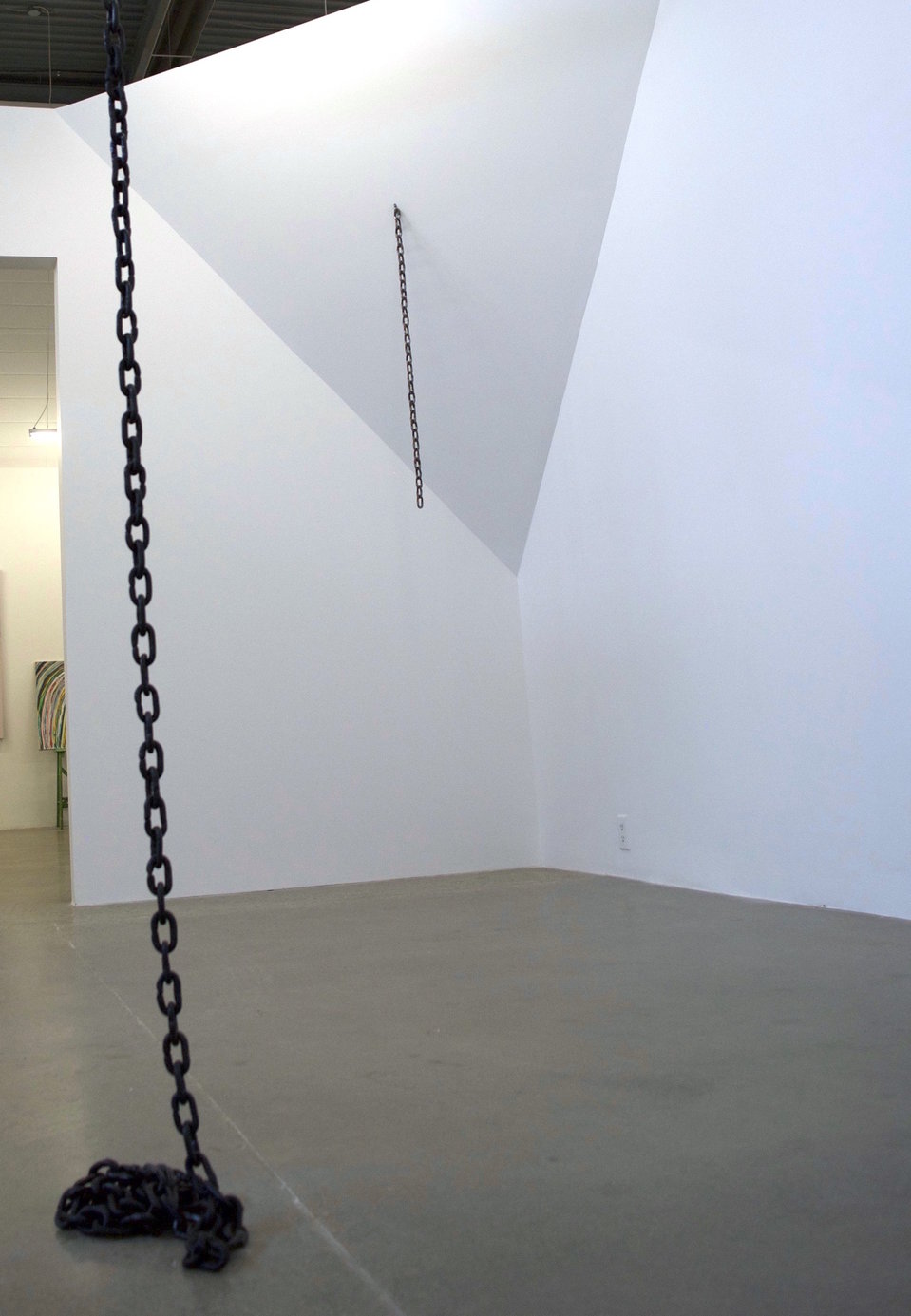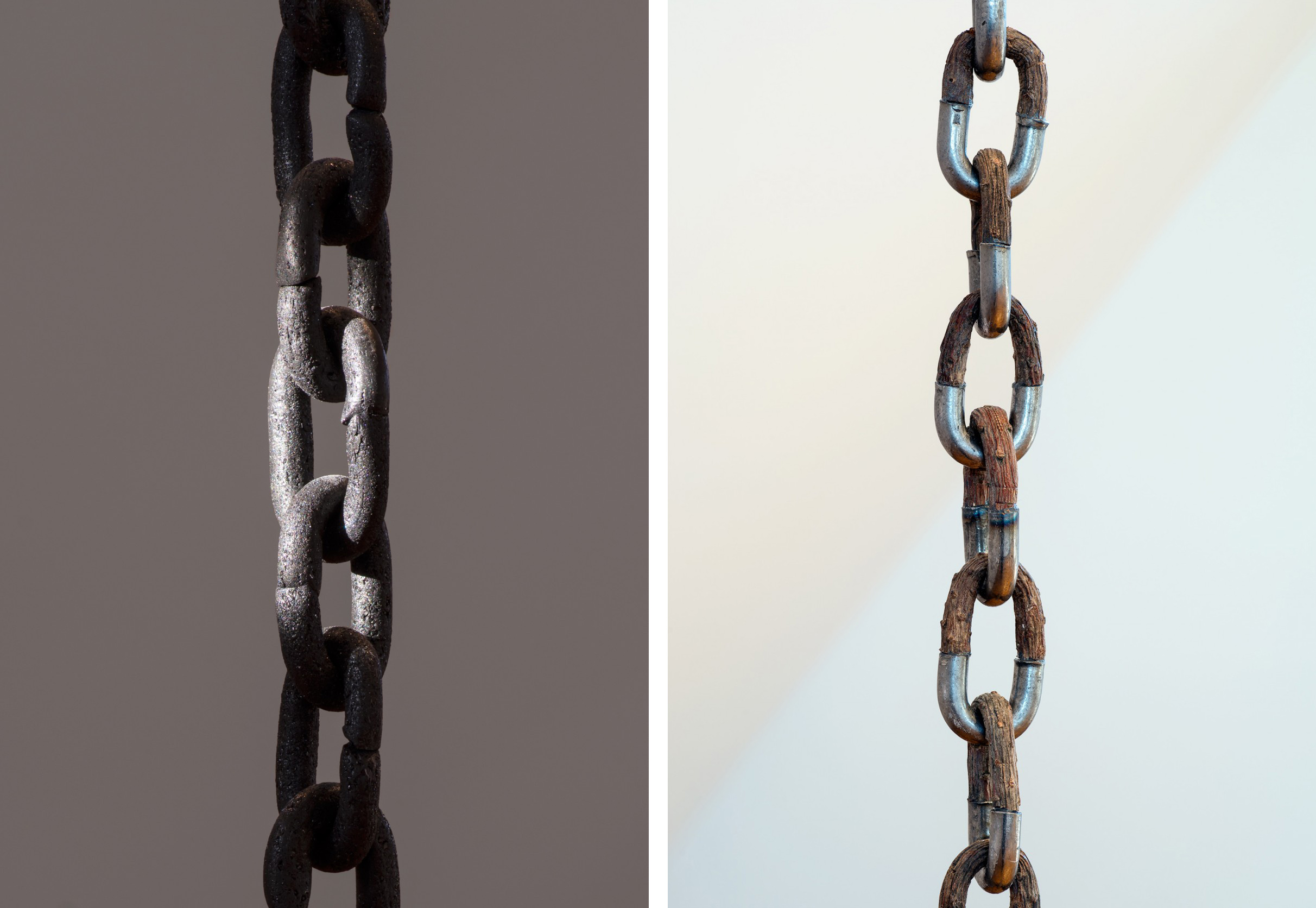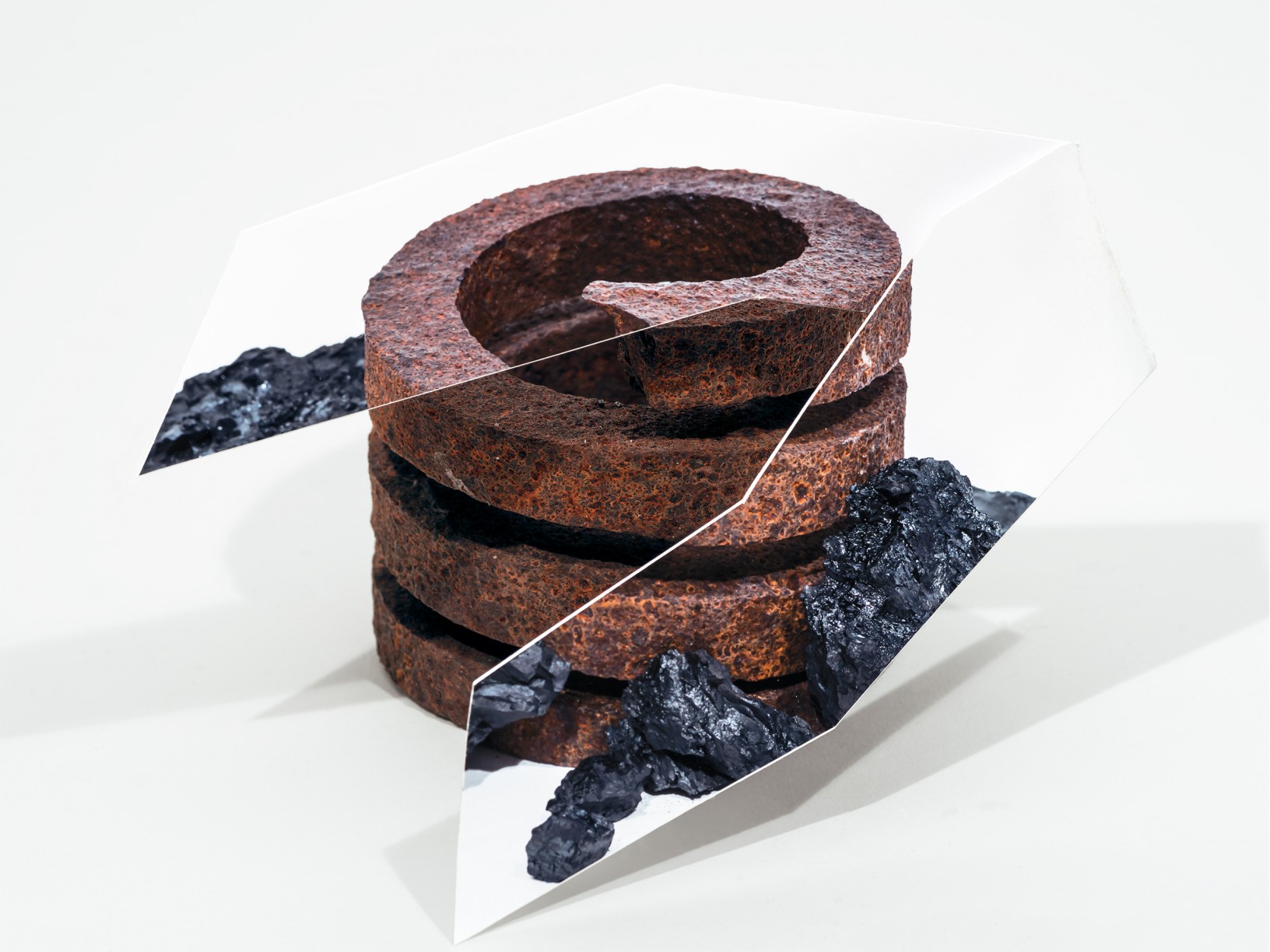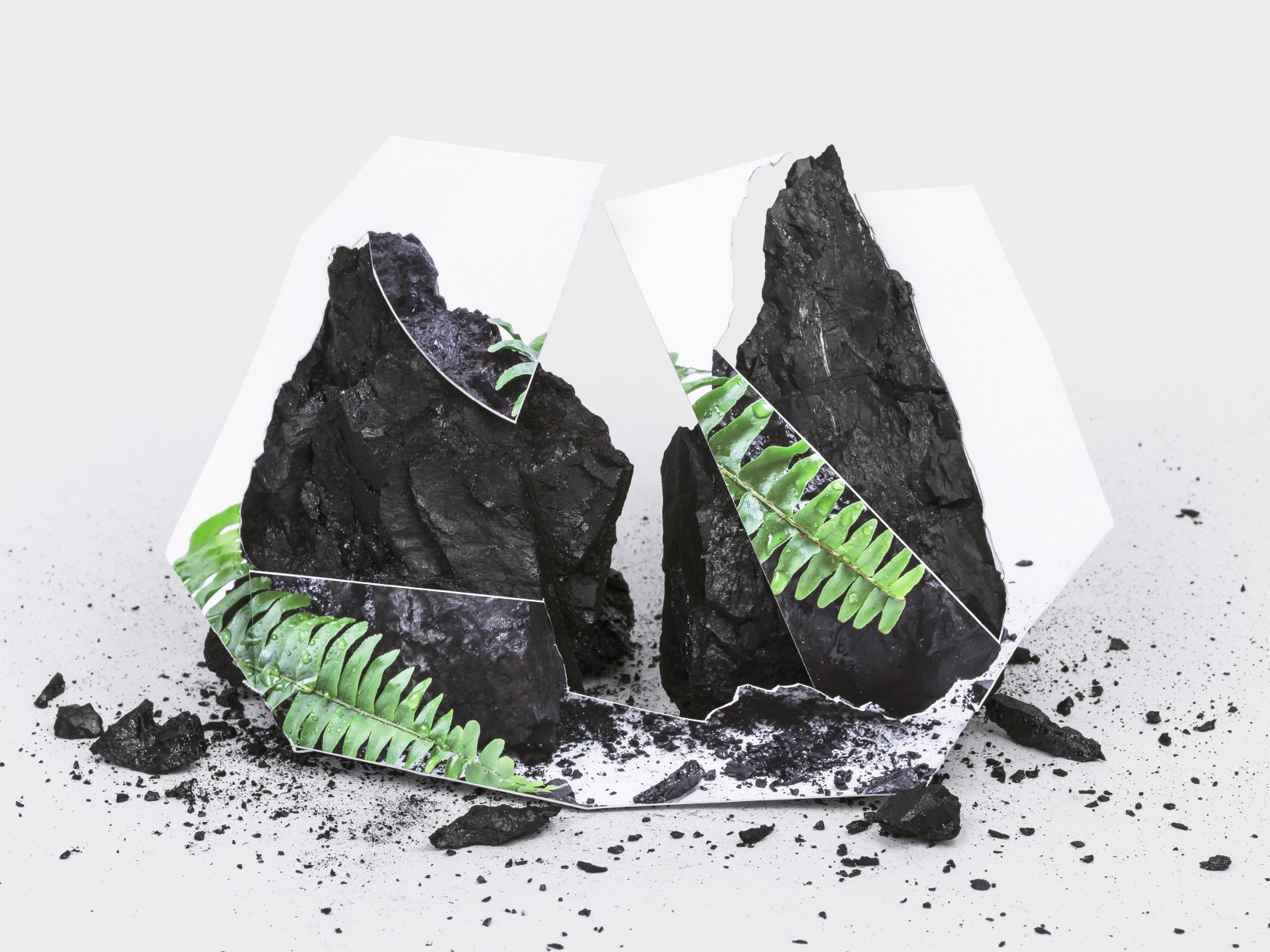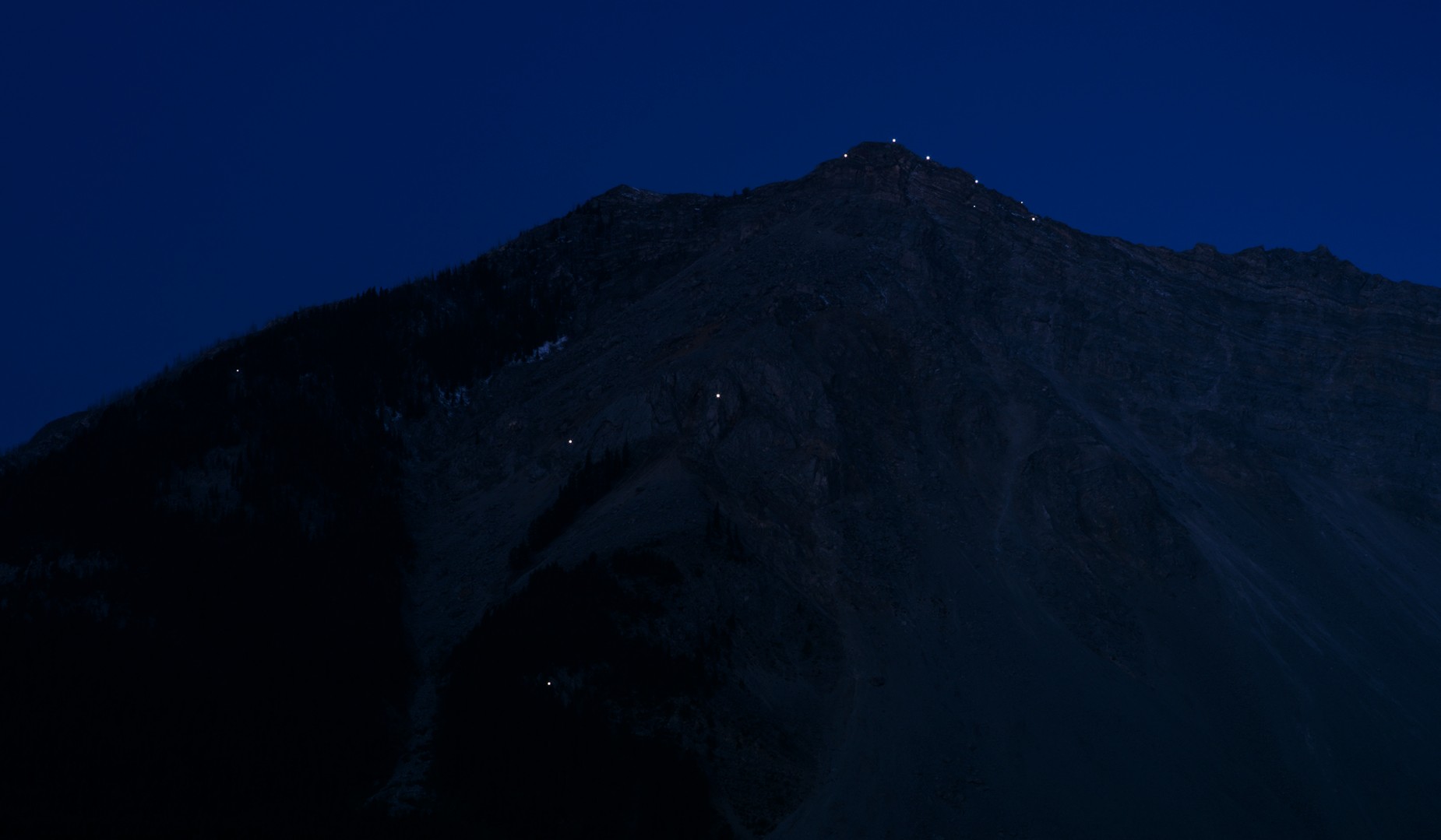In order to explore a slow light, one must explore the concept of “being lost”. Whether walking through a city or a forest, there always is a fear of being lost. Being forgotten; losing your way; wandering a strange place. While legitimate, this fear of unfamiliarity dissipates through wayfinding. Being a skilled wayfinder means never feeling lost – or rather, appreciating being lost. Without the fear, being lost becomes a courageous exploration into new terrain. Tyler Los-Jones’ exhibition a slow light is precisely this: documentation of courage and change.
Installation view of Tyler Los-Jones, a slow light, March 2018 at Division Gallery. Photo: Sunny Kim
a slow light recreates the terrain of a small Alberta community from which these works/orientation markers were taken from. On the floor glistens “Medusa’s ferns”: five square photographs of the community’s geologic formations. Ahead of these panels, two chains hang off the ceiling. One of the chains is connected to the main ceiling and stretches over 27 feet long, densely sitting its last few inches on the gallery ground. The other chain hangs off a temporary diagonal wall. Upon closer look it becomes apparent that both chain is made up of half-wood and half-metal, alluding to trees, mines, gravity, and their relationship to one another. The verticality of these two chains intermingle with the panels on the bottom and act as navigational tools in order to recreate the landscape of Crowsnest Pass. a slow light re-situates and transports its viewers.
Tyler Los-Jones, Medusa’s ferns no.5, 2017, archival inkjet print mounted on Sintra, 24″ x 24″. Courtesy of Division Gallery
Installation view with Tyler Los-Jones, Wayfinding and Sun Tunnels – after Nancy Holt, 2017, coal dust and epoxy putty (front chain) and 1978 – After the Burmis Tree. 2017, Limber pine branches, chain and adhesive (back chain). Photo: Sunny Kim
Details of the chains. Courtesy of Division Gallery
Most interesting, however, are the small photographs on the wall. Fascinatingly composed and edited, they signify the changing of not only the land, but also its role in the community over the years. The completed photographs intentionally highlight its creation process. Geologic forms are initially photographed with an accompanying object – such as chains or leaves. These images are printed and cut into geometric shapes, which are then placed against the original geologic forms and photographed; this time without the accompanying objects. “Sediments and Sunlight no. 8” shows a vestige of a green plant in its printed shapes. I trace the details of the cut image against the details of the formations and confirm that the plant was, at one point, present on the set. Now they only exist in pieces and as memories, disappearing through the community’s morphing material history.
Tyler Los-Jones, Sediments and Sunlight no.9, 2017, archival inkjet print. 12″ x 16″. Courtesy of Division Gallery
Tyler Los-Jones, Sediments and Sunlight no.8, 2017, archival inkjet print, 12″ x 16″. Courtesy of Division Gallery
This exhibition is an evidence of the extensive research Los-Jones conducted in his investigation of this Canadian community. By transporting these wayfinder markers to the gallery space, Los-Jones provides us with the navigational tools with which we can fearlessly explore our own personal terra incognita.
Tyler Los-Jones, Watching falling – the constellation of Turtle Mountain, 2017, archival inkjet print. 28″ x 48″. Courtesy of Division Gallery
Sunny Kim
*Exhibition information: March 3 – 30, 2018, Division Gallery, 45 Ernest Avenue, Toronto. Gallery hours: Tue – Sat, 10 – 6 pm.

